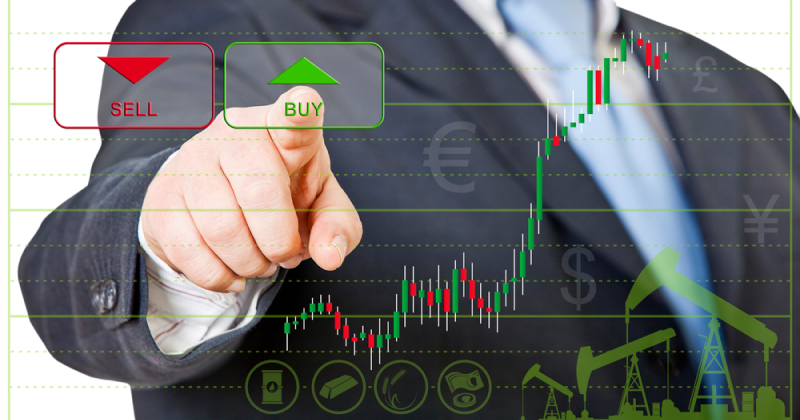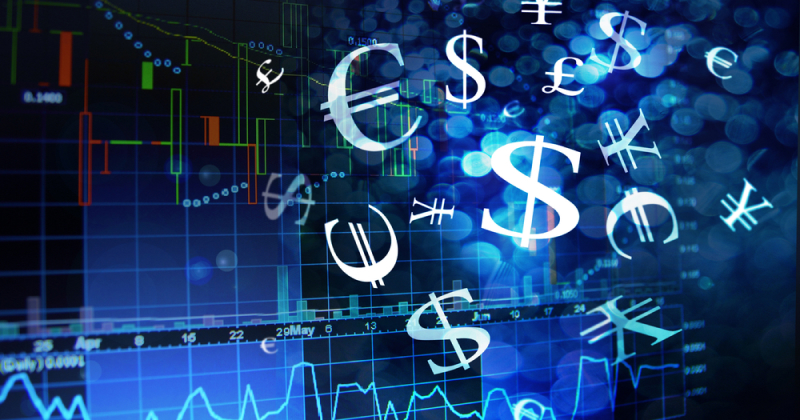What is Forex trading and how does it work?

- What is Forex trading?
- How does Forex trading work?
- What is the Forex market?
- Types of Forex pairs
- Forex Major Currency Pairs
- Forex Minor Currency Pairs
- Forex Exotic Pairs
- Cross Currency Pair
- Leverage in Forex trading
- Margin in Forex trading
- Pip in Forex trading
- Lot in Forex trading
- Lot size
- How to buy and sell currency pairs
- Metatrader4 and Metatrader5
- Conclusion
About 500 years ago, Forex trading started in the city of Amsterdam. Its existence brought about a stabilized currency exchange rates throughout the world. If you have thought of trading Forex but don't have a clear understanding of what it means, read on.
Technological advancement and the emergence of robust computing systems accelerated cross-border capital movements in the 1980s. This development extended foreign exchange trading throughout the Asian, European, and American time zones. Transactions in the foreign exchange market increased drastically from $70 billion a day in 1980 to over $2.5 trillion a day in 2003, and as of today, it is over $6 trillion.
What is Forex trading?
Forex is short for Foreign exchange. It is the act of changing one currency into another one. There are various aims of converting currencies, and these usually include commerce, speculation, or trading. Tourists have to convert to the currency of the country they visit in order to buy or sell. The daily currency conversion rate of some currencies can increase their volatility. As a result, this volatility makes Forex interesting to traders and stakeholders and producing a more striking possibility of high profits while also raising the risk.
How does Forex trading work?
Brokers quote Forex price in pairs. Consequently, a trader is simultaneously selling one currency and buying another. For example, in the EUR/USD pair, the EUR is the base currency, while the USD is the quote currency. If the price of EUR/USD is 1.38, that means 1€ is worth $1.38. When trading Forex, you are at all times quoted two prices —the buy and the sell, and the difference between these prices is called the spread. If you think that the base currency will strengthen against the quote currency, you can go long or sell. However, if you speculate that the base currency will weaken against the quote, you go short or buy.
Forex prices are usually affected by a range of factors, including interest rates, inflation, employment levels, government policies, and demand for imports and exports. And because of the sheer volume of traders and the amount of money exchanged, price movements can happen quickly. Hence, it confers on the Forex market and its volatility. As a trader, it is essential to understand Forex chart patterns as they are crucial to trading success. Most traders place their trading decisions on technical analysis. they prefer to use a platform that can offer useful charts with various options. Trading requires an account from your preferred broker. While a demo account is mainly for practice, you can trade with real money in a live account.

What is the Forex market?
The Forex market is a decentralized, over-the-counter (OTC) market where investors, traders, banks, and other financial institutions wager, buy, and sell global currencies. The market runs 24-hours a day and 5-days a week.
There are three types of Forex market, namely:
- The spot/physical Forex market; in the spot FX market, the foreign exchange of currency pairs takes place on the spot- within a short period or immediately.
- Forward Forex market, in this case, is a contractual agreement to buy or sell a set amount of currency at a stipulated price to be settled on a future date or within a range of future dates.
- Future Forex market represents a legally bounded agreement to buy or sell a currency pair at a specified price and in a future date Forex market.
Types of Forex pairs
There are several currency pairs used in the Forex market. Since the U.S. economy is the largest in the world, it has the advantage of having the U.S. dollar as the dominant and most influential currency in the market. It is often used as the reference or as base currency in foreign exchange transactions worldwide. Some of the most traded currency pairs with high liquidity in the global Forex market are:
- EUR/USD
- GBP/USD
- USD/ JPY
- USD/CHF
- EUR/JPY
- USD/CAD
- AUD/USD
These pairs represent countries with high financial powers traded globally. The change in the price of these currency pairs confers the volatility in the market, and the spread tends to be lower.
Forex Major Currency Pairs
The Forex major currency pairs are ones that include the U.S dollar in it. They are the most wildly traded currencies in the Forex markets. They include Euro against the U.S. Dollar, U.S. Dollar against Japanese Yen, British Pound against the U.S. Dollar, and U.S. Dollar against the Swiss Franc. (GBP/USD, EUR/USD, USD/JPY, and USD/CHF).
- U.S. Dollar: It is dominant and most influential in the FX market, almost all currencies are quoted in terms of U.S. Dollars. It is about 86% of the total foreign exchange transactions in the Forex market. Investors who trade precious metals such as gold, platinum, silver, palladium, etc. carry out trades with prices denominated by the U.S. Dollar. Hence, any fluctuations in the demand and supply of these items directly influence the U.S. Dollar value.
- Euro (EUR): It is the second dominant currency in the Forex market and accounts for about 37% of the foreign exchange transactions. It is widely accepted and used by 18-member countries of the European Union. Its price is dependent on Germany's consumer price inflation (CPI), the European central bank, the unemployment rate, and export data.
- Japanese Yen (JPY): This represents 20% of the global exchange; it is the most traded currency in the Asian Forex market. The risk of JPY currency is related to currency devaluation. Since the Japanese economy is more of an exporting economy, the currency is a safe-haven during a period of risk aversion in the market.
- The British Pound (GBP): This is the U.K's currency, and it accounts for about 17% of all transactions in the global Forex market. It is the fourth most traded currency, and its often used as an alternative to the Euro. Factors affecting the currency include inflation, the country's gross domestic productivity (GDP), and the real estate market.
- The Swiss Franc (CHF) is Switzerland's currency. The price is mainly dependent on the central bank policy, and it's more volatile due to a lack of liquidity.
- The Canadian Dollar (CAD): the Canadian economy being an export-based economy with Crude oil as its major export commodity. The currency's price is greatly affected by the demand and supply of crude oil (commodity-driven currency)
When considering Forex trading, you need to pick a maximum of three pairs to trade, and the general advice is to pick currencies that are making rounds in the financial market.

Forex Minor Currency Pairs
We call a currency pair that does not include the U.S. Dollar a minor currency pair. The most extensively traded minor pairs include the British Pound, Euro, or Yen. Examples of minor currency pairs are:
- CHF/JPY
- EUR/GBP
- NZD/JPY
- EUR/AUD
- GBP/JPY
Forex Exotic Pairs
An exotic currency pair consists of a major currency and one that represents developing economy. Examples of countries with developing economies include Mexico, Argentina, Turkey, Thailand, Hong Kong, etc. Exotic currency pairs are scarcely traded in the Forex exchange market because of their high volatility and lack of liquidity. Exotic currency pairs include EUR/TRY, USD/HKD, JPY/NOK, NZD/SGD, GBP/ZAR, AUD/MXN.
Cross Currency Pair
A cross-currency pair denotes a currency pair that does not include the U.S. Dollar. The cross-currency transaction allow other currencies to take the position of the deal maker. Examples include:
- CHF/JPY
- EUR/CAD
- GBP/AUD
- AUD/CHF
- AUD/JPY
Leverage in Forex trading
Forex leverage is a loan provided by the broker to the investor that enables him to trade a larger amount than his/her initial balance. The ratio can be 2:1, 3:1, 10:1, 20:1, 50:1, 100:1, and 200:1 up to 500:1. For example, if you deposit a $20,000 and choose to trade with a leverage ratio of 100:1, you can trade up to 100 times $10,000, which equals to $1,000,000. In other words, the leverage provides the means to an investor to have increased trading capital giving him/her the opportunity of having a maximized outcome.
Margin in Forex trading
Margin is the initial deposit made by a trader in other to trade on leverage. It is usually a fraction of the actual amount of the investment to be made. For example, if a trader were to deposit $20,000 in an account with 1:25 leverage, the applicable margin would be 4%. It implies that if the trader were to buy two lots of EUR/USD at 1.200, he would need $9,500 (4% of $240,000) in his account to keep his position open.
Pip in Forex trading
A pip is a unit of measure to show a change in value between two currencies. The change of value in the counter currency equals the pip value, and the pip value is relative to the base currency. For example, if the EUR/USD price is 1.3500, and after a while, it moves to 1.3501, the pip value is 1. Each currency has its relative value that is relative to the other currency in the pair. To calculate the base currency's pip value, if the EUR/USD is trading at 1.3500, meaning that 1 EUR equals 1.3500 USD, we can easily calculate the value of 1 pip. We take the value of one pip to be 1 Divided by 1.3500 EUR = 0.7 EUR.
Usually, a Forex broker quotes two varying prices for a currency pair. These are the bid and ask price, and the difference between them is the spread. The term "spread" is used in every financial market in the world. While it can have several meanings, in Forex, however, it is the difference between the buy and sell price of an underlying asset. To earn from every trading you make, your broker includes the cost to the bid and ask price of the currency pair you intend to trade
Lot in Forex trading
The lot size is an integral part of money management that should not be ignored by any trader, you can -have the best strategies in the world, but if you fail to calculate your lot size correctly, you will lose money. The lot size is the number of units of the currency you buy or sell in a particular trade. To calculate your lot size correctly, you need these four things: capital, risk per trade, the value per pip, and stop-loss level.
Lot size
Currencies are traded in lots; there are three lot sizes; standard lot (100,000 times the base currency). A mini lot (10,000 times the base currency). And the micro lot (1,000 times the base currency). Before trading in Forex, a trader should consider the following:
- Work out pip value for intended trade
- Work out how much capital you are willing to risk.
- Appreciate how likely it is to reach it (e.g., using the true average range, upcoming events, stop loss levels).
Some of the benefits of trading in the Forex market include:
- Low cost.
- No middlemen.
- No fixed lot sizes.
- Low transactions costs.
- No single participant can control the market as it is a vast market.
- The market is open 24-hours five days a week; this allows traders to trade at a time of convenience.
- The use of leverage and margin is another benefit of trading in Forex, with this trader can trade with more money than is available and thus maximize profit.
- The Forex market has very high liquidity.
How to buy and sell currency pairs
Several factors drive the currency markets. A trader must understand that the supply and demand for currency changes as a result of varying economic developments. These developments drive the currency exchange rates up and down. Usually, you trade currency in pairs. Hence, buying and selling currency pairs implies that you speculate that the value of one currency will increase relative to another. A currency pair consists of a transaction or base (the first) currency and the counter or quote(second) currency. If you are trading the EUR/USD, you notice that the Euro is the base currency, while the USD is the quote currency. If you believe the Dollar will weaken, you perform a BUY EUR/USD order. This action implies you have bought the Euros hoping that it will rise against the U.S Dollar. Conversely, if you believe the U.S Dollars will rise against the Euro, you perform a SELL EUR/USD order.
Metatrader4 and Metatrader5
Trading platforms have played vital roles in modern trading. Today, you can trade Forex with the industry's most celebrated web-based trading platforms with great ease.
The MT4 and the MT5 Web trader platforms offer cutting edge features to facilitate a conducive environment for trading and understanding Forex charts. The MT5, for example, offers hedging alternatives and in-built key and technical analysis tools for the modern trader. What's more important is that these platforms are robust, secure, fast, and easy-to-use.
Conclusion
Forex trading promotes trade between countries in today's global market place. Unlike another trading, Forex trading does not involve commission payments and paperwork, and it is a highly liquid market. It is not necessary to become an expert before trading in this market. However, it is critical to gain all the necessary skills, technical knowledge, and understand the principles of trading currencies before embarking on Forex trading.










